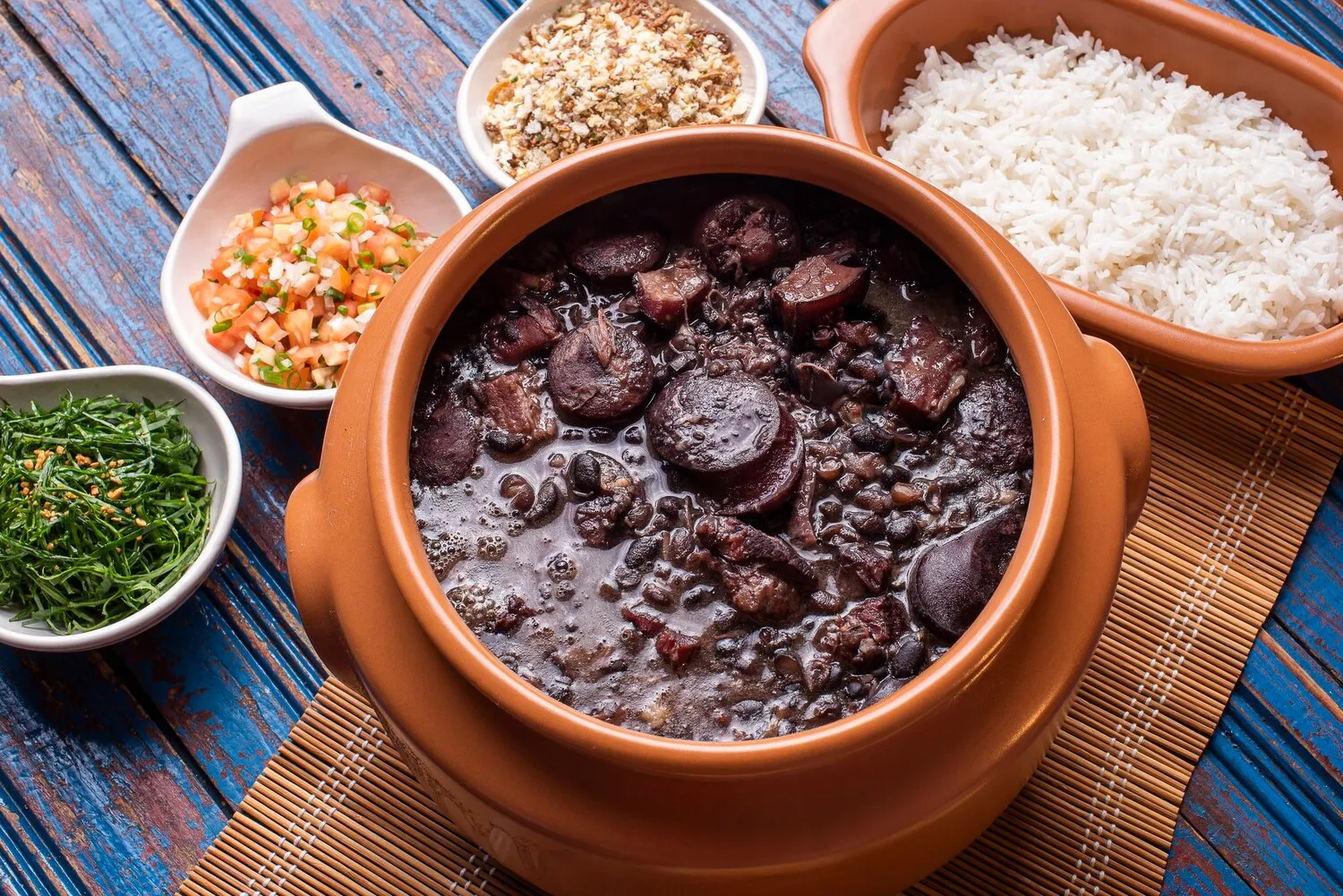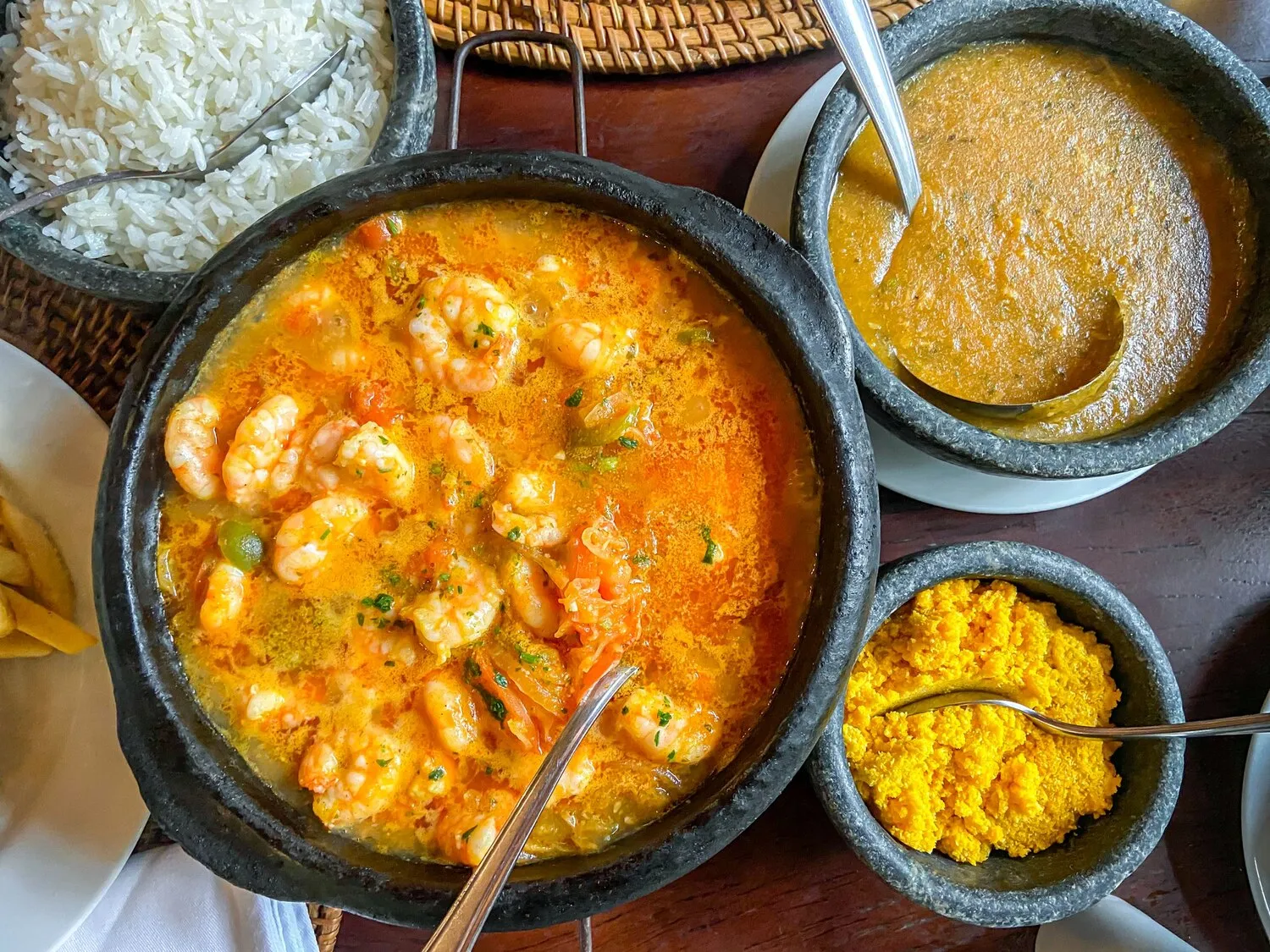
Feijoada
Traditional black bean stew with various cuts of pork and beef.
Nutrition Facts
* The % Daily Value (DV) tells you how much a nutrient in a serving of food contributes to a daily diet. 2,000 calories a day is used for general nutrition advice.
Feijoada's origins are debated, with some believing it originated from enslaved Africans using discarded meat cuts, while others point to a Portuguese influence with similar stews. The use of black beans and various pork products reflects both available ingredients and resourcefulness.
Feijoada is more than just a dish; it's a symbol of Brazilian national identity and a communal dining experience. It represents a blend of cultures and reflects the country's history and resourcefulness.
Social Gathering
Feijoada is traditionally served on Saturdays or Sundays and is meant to be shared with family and friends. The preparation and consumption of feijoada are often elaborate and leisurely affairs.
National Dish
Considered Brazil's national dish, Feijoada reflects the country's diverse culinary heritage, influenced by indigenous, African, and European traditions. It is a source of national pride.
Regional Variations
While the core ingredients remain consistent, regional variations exist in the specific cuts of meat and accompanying side dishes. Each region often claims to have the 'authentic' version.
Feijoada is a rich and savory stew characterized by its smoky, salty, and earthy flavors. The combination of black beans, various pork cuts, and beef creates a complex and deeply satisfying taste profile.
The primary flavor components come from the black beans, which provide an earthy base. Smoked sausages (like linguiça and paio) contribute a smoky depth and saltiness. Salted pork (carne seca) adds a concentrated meaty flavor. Other pork parts, such as ribs, ears, and feet, enhance the overall richness and texture. Bay leaves, garlic, and onions are essential aromatics that balance the flavors.
Soaking the Beans
Soaking the black beans overnight significantly reduces cooking time and helps to achieve a creamier texture.
Desalting the Meat
Salted meats require thorough desalting before cooking. Soak them in multiple changes of water for at least 24 hours to remove excess salt.
Cooking Order
Add the meats in stages, starting with the saltiest and toughest cuts, to allow them to release their flavors and tenderize properly. Softer meats and sausages should be added later to avoid overcooking.
Side Dishes
Feijoada is traditionally served with accompaniments such as white rice, collard greens (couve), orange slices (to aid digestion), farofa (toasted cassava flour), and hot sauce.
Explore additional Stew dishes and restaurants
Explore StewDiscover top dining spots and culinary experiences in V Redonda.
Explore V RedondaLearn more about the food culture, restaurant scene, and culinary heritage of Brazil.
Explore Brazil
